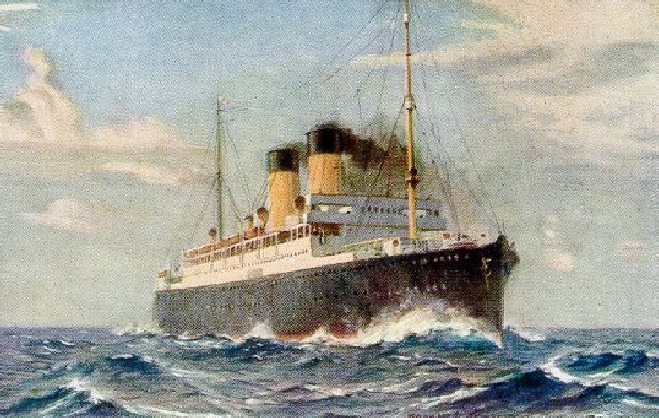
In April 1923 some 600 islanders waved goodbye to their loved ones and set sail for the promise of a new world across the Atlantic.
Within just eight days a generation of people vanished from the Western Isles, desperately seeking a better life in a new country.
So vast was the exodus that two ships were diverted off their normal voyage to pick up the mass wave of passengers departing ports in Lewis and South Uist.
Now a community-
Dìleab 2023 (Legacy 2023) is a comhairle-
Links are being forged with comunn eachdraidh societies across the islands as well as Fèisean nan Gàidheal, through its formal education service, Fèisgoil, to work with schools and the new Dìleab co-
Writers and storytellers will work with schools on scripts which will be showcased in the early spring in a variety of school settings.
Other creative people brought on board by Fèisean nan Gàidheal, including visual artists and musicians, will add further artistic input for the children involved.
Evelyn Coull MacLeod, Gaelic education manager at Comhairle nan Eilean Siar said: “I am delighted to have Marisa MacDonald working on Dìleab 2023.
“Our schools are excited to be involved in the project. It is extremely important for our young people to know our history and reflect on what was a time of immense change across the islands.
“We want to explore those who left, where they went to, what lives they forged for themselves and where are the wider diaspora of those who left now located.
“We are looking for individuals within our communities to be involved as we are keen to promote and facilitate intergeneration learning.
“We would welcome contributions from those who have connections and stories about those who left to forge new lives for themselves.”
Jasmine Wilkie from the Outer Hebrides Heritage Forum said they are pleased to facilitate partnership working between Dìleab 2023 and relevant comainn eachdraidh.
“Local community heritage organisations play a key role both in understanding significant historical events, such as the departure of these emigrant vessels, as well as in our education sector, linking our young people to their history.
“Comann Dualchas Innse Gall are keen to encourage partnership work between schools and their local comunn eachdraidh, and would commend to our members to support this initiative.”
Most Scottish emigrant ships left directly from Glasgow to Canada, Canadian Pacific’s
But the voyages that April of the SS Marloch and SS Metagama were unique as they called in to Lochboisdale and Stornoway.
When the Metagama sailed from Stornoway on the 23rd of April 1923, she contained 300 people, mostly from Lewis with an average age of twenty two – all but twenty were young men.
They were originally bound for Montreal, but the ship diverted to St John Harbour, New Brunswick, due to the danger of ice bergs near the end of their journey.
This was the island’s first mass-
The Stornoway Gazette described the “affecting” scene as throngs of people gathered to bid farewell to their departing sons, daughters and relatives.
There were “tears in many eyes, for not a few of the lads who had come away from the pier light-
A "lasting memory" it was indeed for those who saw the great liner and the small coaster part company. And the pipe band played "The Road to the Isles", a road they would doubtless often travel in thought.
Earlier that month, on the 15th of April, SS Marloch weighed anchor in Loch Boisdale, setting course of St John, New Brunswick.
On board were at least 50 families from Barra, Eriskay, Benbecula, and North and South Uist.
Over 300 men, women and children were on their way to the Clandonald colony in the Red Deer area of Alberta.
Those who left on the Marloch were part of large resettlement program, sponsored by the Scottish Immigrant Aid Society. They were offered the chance of better lives in the agricultural heartlands of Central Alberta and north-
The Hebrideans were considered to be the “right” kind of settlers. The speeches at their official welcome to Red Deer referred to them as a “class of people that keep their Sabbath” and as “loyal subjects” of the British Empire.
Most of the new arrivals at Red Deer spoke Gaelic, not English. Fortunately, there were a number of people living in the area who could greet the newcomers in their own language.
However, another more important problem was that the new immigrants had been fishermen, and not farmers. As soon as they arrived, they were taken to the old Red Deer Indian Industrial School west of the city.
Once there, they were provided with food and accommodations as well as instruction in farming and English. As soon as they were deemed ready, the new settlers were moved to farms either west of Red Deer, or in the Westlock and Vermillion areas.
Plans to mark centenary of Hebridean exodus to Canada
02 December 2022